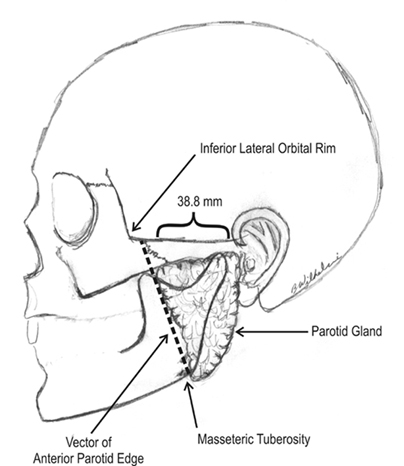Sunday, November 3, 2002 - 8:54 AM
944
Facelift with Bony Anatomic Landmarks to Elevate Smas
Purpose: The risk for facial nerve injury has been reported to be increased with the inclusion of SMAS elevation as compared to a skin only facelift. The facial nerve courses through the parotid gland. The SMAS is elevated superficial to the parotid gland. However, in elevating the SMAS anterior to the parotid gland the facial nerve is at risk to injury where its branches emerge from the anterior edge of the parotid gland. The purpose of this study was to identify bony anatomic landmarks to predict the location of the anterior edge of the parotid gland to avoid injury to the facial nerve branches as they exit the parotid gland. Method: We dissected 20 cadaver face halves to determine bony landmarks, the masseteric tuberosity and the inferior lateral orbital rim, to predict the location of the anterior parotid edge. Then, we measured the anterior edge of the parotid gland in relation to the vector formed between these two bony landmarks. We identified and measured the most anterior portion of the parotid gland in relation to this vector. Then we measured the most posterior aspect of the parotid gland in relation to this vector. Results: In the 20 dissections, we found the most anterior portion of the parotid gland to be 2.7 +/- 1.0mm anterior to the vector from the inferior lateral orbital rim to the masseteric tuberosity. We found the most posterior part of the anterior edge of the parotid gland in relation to this vector, 1.0 +/- 1.5mm posterior to this vector. The parotid gland measured an average 38.8 +/-3.5mm in width from the tragus to the anterior parotid edge. Conclusion: In elevating the SMAS with a facelift, the facial nerve branches can be predicted to exit the anterior edge of the parotid gland which can be located 38.8mm anterior to the tragus and near the vector from the inferior lateral orbital wall to the masseteric tuberosity.

See more of Cosmetic
Back to 2002 Complete Scientific Program
Back to 2002 Meeting home
